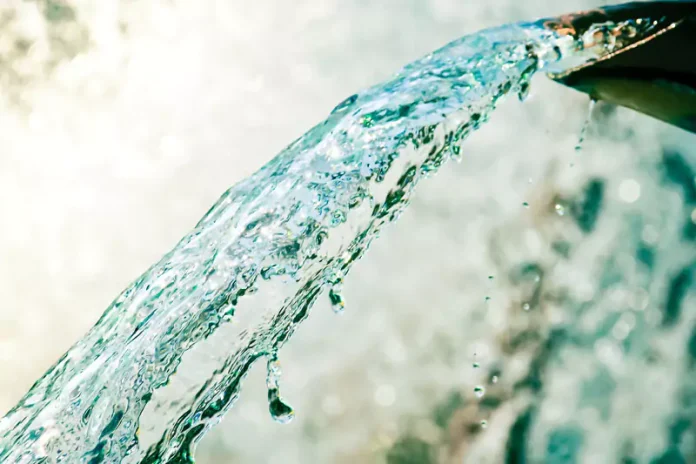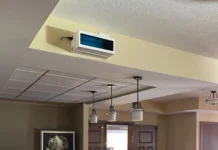By Castine A. Bernardy, Ph.D. Candidate, Civil and Environmental Engineering, University of New Hampshire, castine.bernardy@unh.edu; James P. Malley Jr., Ph.D., Professor of Civil and Environmental Engineering, University of New Hampshire, jim.malley@unh.edu
Global UV Disinfection Market at a Glance
Information flow and market research on UV technologies has been improved since the “Ultraviolet (UV) Disinfection: Global Strategic Business Report” of March 2023 has been added to offerings from Research and Markets. 1 Provided here for interest, not peer review and no endorsement by IUVA or UV Solutions should be assumed, is its recent summary:
“The Ultraviolet (UV) Disinfection market in the US is estimated at US $1.2 Billion in the year 2022. China, the world’s second largest economy, is forecast to reach a projected market size of US $2.8 Billion by the year 2030 trailing a Compound Annual Growth Rate (CAGR) of 16.2% over the analysis period 2022 to 2030. Among the other noteworthy geographic markets are Japan and Canada, each forecast to grow at 10.5% and 11.4% respectively over the 2022-2030 period. Within Europe, Germany is forecast to grow at approximately 11.2% CAGR. Led by countries such as Australia, India and South Korea, the market in Asia-Pacific is forecast to reach US $2 Billion by the year 2030. The global market for Ultraviolet (UV) Disinfection, estimated at US $4.7 Billion in the year 2022, is projected to reach a revised size of US $12.9 Billion by 2030, growing at a CAGR of 13.4% over the analysis period 2022-2030. UV lamps, one of the segments analyzed in the report, is projected to record a 14.6% CAGR and reach US $5.4 Billion by the end of the analysis period. Considering the ongoing post pandemic recovery, growth in the ballasts / controller units’ segment is readjusted to a revised 12.9% CAGR for the next 8-year period.” 2
UV LED Research Sponsored by The Water Research Foundation (WRF)
Over the past two years, the Water Research Foundation (WRF) has funded three interesting, timely and exciting projects related to UV LED. A special thanks to Dr. H. Grace Jang, research program manager at WRF, for providing the following information:
Recently funded WRF Project 5173: Feasibility of Full-Scale Implementation of UV LED Disinfection. The work will commence shortly and involves a large number of task participants, led by Dr. Graham Gagnon of Dalhousie University. The abstract states, “The objective of the proposed project is to perform a quantitative assessment of the feasibility of full-scale ultraviolet light emitting diode (UV LED) water disinfection reactors for drinking water and wastewater treatment applications through a One Water approach.” This proposal outlines four tasks. Task 1A is led by Black and Veatch and includes 15 different regulator stakeholders from across North America as part of UV LED surveys and workshops. Task 1B, led by Dr. Graham Gagnon (Dalhousie University) and Dr. Karl Linden (University of Colorado Boulder[CU Boulder]), will consist of a published, peer-reviewed literature review, which will establish the state of the art for UV LED technologies and inform the bench-scale methods for studying UV LED disinfection in Task 2.
Task 2 is an interlaboratory study jointly led by Dalhousie and CU Boulder where each lab will, in parallel, collect water from five participating water utilities from across North America to benchmark UV LED performance while simultaneously establishing a harmonized protocol for bench-scale UV LED studies. Task 3 will investigate UV LED disinfection of surface water sources, groundwater sources and wastewater effluent. Task 3A utilizes a 10-gallons-per-minute (gpm) UV LED reactor installed within the Atlantic First Nations Water Authority network. The Southern Nevada Water Authority has the largest installed UV LED reactor (1000 gpm) in North America and will lead Task 3B activities at its installation site over six months. A 100-gpm closed-channel UV LED reactor will be installed at one of Halifax Water’s wastewater facilities for Task 3C. This work assesses the feasibility of UV LED disinfection for wastewater matrices over the course of a six-month study period. Task 4 will deliver an economic model and lifecycle analysis for UV LED installation and use. Task 4 will incorporate information from all previous tasks to inform and provide guidance to utilities, regulators and stakeholders who are considering UV LED technologies.
Last year, WRF funded Project 5213, Inactivation of Biofilm-bound Opportunistic Pathogens in Premise Plumbing Using UVC LEDs. The work began in December 2022 under the direction of Karl Linden at CU Boulder. The abstract states, “Opportunistic pathogens (OPs) have been detected in biofilms in building plumbing, presenting potential risks to drinking water quality and safety. Light emitting diodes (LEDs) emitting germicidal UV radiation are an emerging UV technology, and previous studies show that they could be an ideal solution for long-term management or water distribution systems and building plumbing pathogens. Advantages of UV LEDs include small footprint, lifetime, selectable emission wavelength, high power density, instantaneous powering on and no direct disinfection byproduct (DBP) production. The goal of this research is to investigate the potential role for UV technology in minimizing the formation of adverse biofilms and controlling opportunistic pathogens in water distribution pipe networks.” Other specific information and progress of the ongoing project are available. 3
Also funded in 2022 was Project 5218, Inactivation of Amoeba-internalized Legionella pneumophila by UV LED and Multi-Barrier Approaches. The work began in March 2023 under the direction of Ariel Atkinson at the Southern Nevada Water Authority. The abstract states, “Legionnaire’s disease represents most water-related deaths in the United States and continues to climb, with current estimates at 52,000 to 70,000 L. pneumophila- (Lp) caused illnesses each year. This incidence rate exceeds the 1 in 10,000 risk benchmarks commonly used for determining pathogen targets in quantitative microbial risk assessments. Understanding the implications of amoeba-internalized Legionella remains an overlooked area of research to provide more accurate and meaningful monitoring by utilities and public health agencies. The proposed project also will add crucial information on the efficacy of conventional treatment strategies for Legionella, as well as demonstrate the benefits of emerging technology (UV LED) and multi-barrier strategies. The results of this project will provide critical information and guidance that is necessary for better Legionella management by utilities, building water system operators, public health agencies and the water industry.” Other specific information and progress of the ongoing project are available. 4
UV Technology and PFAS
No column in 2023 related to “One Water” would be complete without mention of PFAS. Likely well known to most water industry professionals is that the EPA proposed regulations for six PFAS compounds in March 2023. Maximum Contaminant Levels (MCLs) for PFOA and PFOS are proposed as 4 parts per trillion (~4 nanograms / Liter). A weighted cumulative (additive) hazard index (HI) approach was proposed for the four PFAS compounds – PFBS, PFHxS, PFNA and HFPO-DA (aka GenX) – where the total sum must be 1 or less to comply with the MCL. Experienced professionals in water also recognize that the journey and timeline from proposed MCLs of this low level and complexity with such far reaching consequences to the actual finalized and enforceable standards for PFAS can be a long and slow process. For further detail and clarification, a concise set of summary slides can be downloaded from the EPA website. 5
PFAS and related societal (health), economic and environmental concerns have sparked an unprecedented level of activity amongst “One Water” and related professionals in all levels of the family of five (utilities, service providers, manufacturers, regulators and researchers) which rivals and surpasses historically significant issues, including DBPs and Microbial Risk (e.g., Cryptosporidium). Naturally, it leads one to ask if some form of UV technology be a “silver bullet” for PFAS, as it was for Cryptosporidium.
To date, one must conclude that is unlikely since direct photolysis, as well as advanced oxidation by AOPs, has not been proven practical or likely to gain widespread use for the six regulated PFAS compounds when compared to the current benchmarks of GAC and/or IX sorption processes. Ongoing research into UV-driven advanced reduction processes has shown some promising results and, with each year, more is learned about related topics, such as PFAS precursors also present in drinking water. Also, it is important for water professionals to note that, like any other emerging and intensely studied topic, the development and understanding of appropriate approaches for selection, design, operation and maintenance of solutions to reduce the risk of PFAS compounds to human health and environment is in its infancy. Technological advancement will follow the well-known “saw tooth” curve of understanding and potential implementation (e.g., three steps forward and two steps back).
References
- www.researchandmarkets.com
- www.globenewswire.com/en/news-release/2023/03/15/2627408/28124/en/Ultraviolet-UV-Disinfection-Global-Market-to-Reach-12-9-Billion-by-2030-UV-Disinfection-Presents-Intriguing-Alternative-to-Chlorine-for-Water-Treatment-Units.html
- www.waterrf.org/research/projects/inactivation-biofilm-bound-opportunistic-pathogens-premise-plumbing-using-uvc
- www.waterrf.org/research/projects/inactivation-amoeba-internalized-legionella-pneumophila-UVLED-and-multi-barrier
- www.epa.gov/system/files/documents/2023-04/PFAS%20NPDWR%20Public%20Presentation_Full%20Technical%20Presentation_3.29.23_Final.pdf






